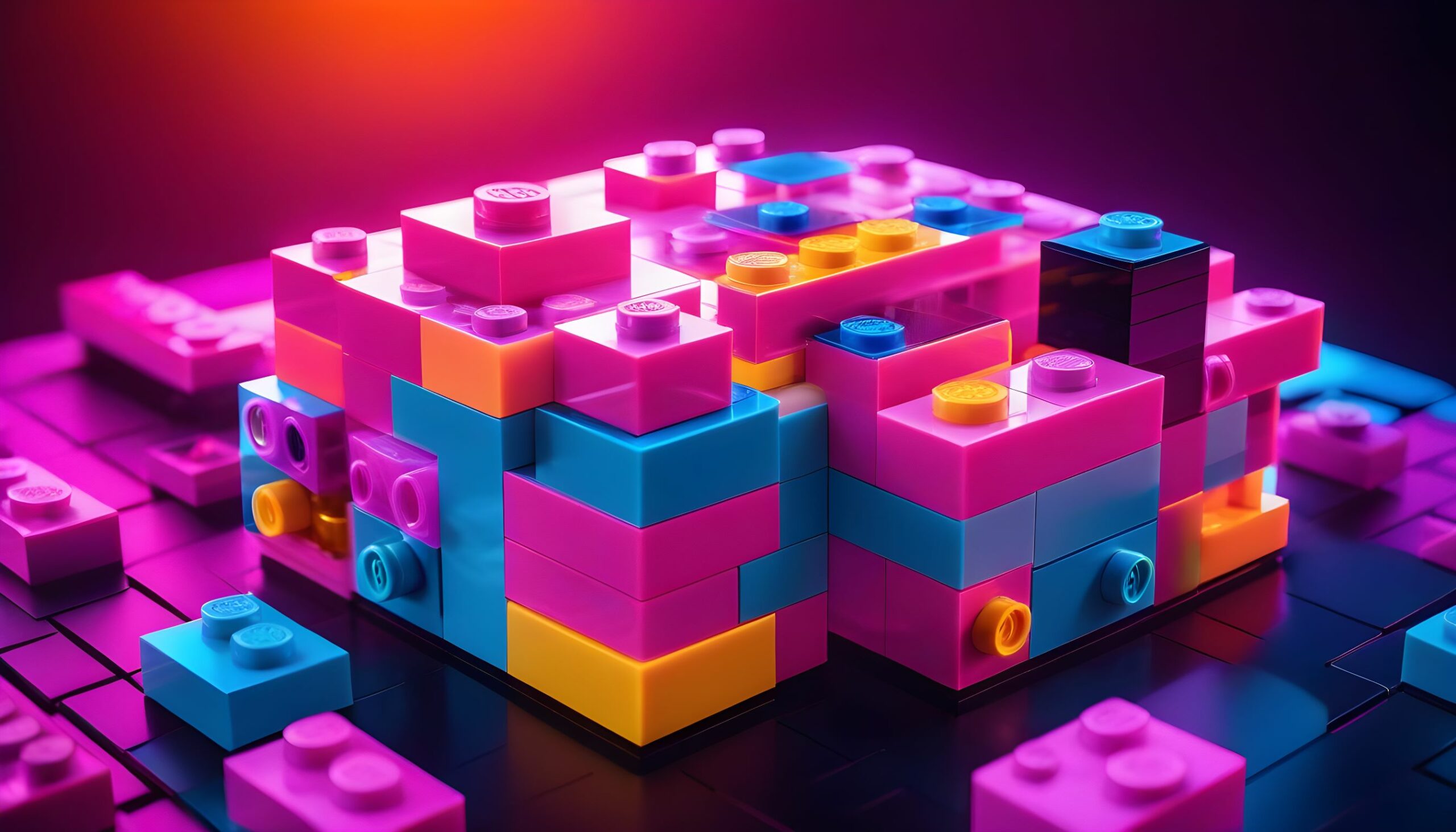In the ever-evolving realm of decentralized finance (DeFi), composability stands as a pivotal force, acting both as a catalyst for growth and a fertile ground for innovation. In this article, we delve into the intricate dynamics of composability; highlighting its importance, dissecting its underlying components, discussing varied types, and unraveling the multifaceted implications it bears.
Through insightful comparisons with the traditional finance sector, the narrative unfolds to illuminate the benefits and challenges interwoven into the fabric of DeFi composability.
Composability in DeFi
At its core, composability refers to the ability to combine multiple DeFi applications and protocols, like Lego blocks, to create more complex and customized financial products. For example, you can use a decentralized lending protocol to take out a loan and a decentralized exchange to swap the loan proceeds into a different cryptocurrency. Or you can leverage a yield farming protocol on the returns from your loan to maximize earnings.
The composable nature of DeFi applications derives from the open and interconnected architecture of blockchain networks. Most DeFi platforms are built on networks like Ethereum which allow different applications to interface with each other seamlessly through standards like the ERC-20 token protocol. This means the output of one DeFi app can become an input to the next app down the value chain.
The Importance of Composability in DeFi
Innovation Catalyst: Composability unlocks a whole new level of creative possibilities in decentralized finance. Developers can mix and match modular components from different platforms to build new and disruptive solutions. With composability, anyone can customize and further innovate on existing DeFi constructs without reinventing the wheel each time. This allows for faster iteration of new products and services. Composability also lowers barriers to launching innovative markets as complementary components can be leveraged easily.
Efficiency and Liquidity: Beyond its transformative impact on the financial ecosystem, composability becomes a linchpin enhancing efficiency and liquidity in the DeFi landscape. It acts as an egalitarian gateway, dismantling entry barriers for users and developers, and fostering a more open and accessible DeFi ecosystem.
For end-users, composability translates to modular financial products that meet their unique needs. DeFi protocols like Uniswap and Aave under the hood, but users only interact with the finished product called a DApp (decentralized application). The DApp developer handles all the composability behind the scenes by plugging and playing with DeFi money legos like assets swaps, loans, and yields to create a tailored user experience.
Components of Composability
Smart Contracts
At the core of many DeFi applications, self-executing code on the blockchain, known as smart contracts, constitutes the foundational layer of composability. These intelligent contracts form the bedrock upon which interactions and interoperability thrive, embodying the essence of DeFi innovation.
Interoperability and Token Standards
Standards such as ERC-20 and ERC-721 play a pivotal role in ensuring compatibility and interoperability, allowing seamless interchangeability of tokens and protocols within the intricate tapestry of the DeFi ecosystem. These standards act as the universal language facilitating the seamless integration of disparate components.
Lending and Borrowing Protocols
Integral components of composability, lending platforms, and decentralized exchanges enable the seamless lending, borrowing, or swapping of assets. Composability empowers these protocols to interconnect, giving rise to complex financial strategies and innovative trading approaches that redefine the DeFi landscape.
APIs and SDKs
The lifelines of interoperability and accelerated innovation, Application Program Interfaces (APIs) and Software Development Kits (SDKs) act as crucial tools for smooth communication between different protocols. These tools simplify the integration of diverse functionalities within the DeFi landscape, serving as bridges that enable the seamless flow of information and capabilities.
Types of Composability in DeFi
Morphological Composability: Components or modules amalgamate while retaining their unique features, operating independently within a broader system. This form enables the creation of intricate structures while preserving the individuality of the building blocks.
Atomic Composability: Individual components or modules function autonomously, offering specific services that can operate alone or in concert without compromising their integrity. This type encapsulates the independence and self-sufficiency of each component.
Syntactic Composability: Focused on compatibility based on interfaces or communication protocols, this type ensures seamless communication and information exchange between components. It emphasizes standardized interfaces, guaranteeing smooth interoperability.
Composability vs. Interoperability
While composability emphasizes the flexible combination of elements within a system, interoperability expands its purview to encompass the broader compatibility and interchange between different systems or networks. Composability is the art of harmonizing diverse components, whereas interoperability is the seamless collaboration and communication between disparate systems.
Composability in Traditional Finance vs. DeFi
In stark contrast to the rigid and compartmentalized structure of traditional finance, DeFi’s composability heralds a more flexible, inclusive, and rapidly evolving financial landscape. Smart contracts serve as the linchpin for smooth communication between protocols, ushering in an era of unprecedented innovation and flexibility within DeFi. The interconnected nature of DeFi components facilitates a collaborative ecosystem, fostering an environment where financial innovation knows no bounds.
Benefits of DeFi Composability
Quick Invention: Composability accelerates the development of new financial products, fostering experimentation and evolution. The agility it affords to developers enables the rapid prototyping and deployment of innovative solutions.
Efficiency and Liquidity: Minimizing idle resources, composability optimizes asset utilization and enhances overall market efficiency. Simultaneously, it lowers entry barriers, making DeFi more accessible and inclusive.
Enhanced User Experiences: The interconnected nature of services and applications underpins superior user experiences, steering the trajectory of decentralized finance’s development and growth. Users can seamlessly navigate and utilize a variety of services, contributing to a more user-friendly and intuitive DeFi ecosystem.
Challenges and Risks
Security Vulnerabilities: Protocols’ interconnectedness necessitates robust security measures and extensive auditing to mitigate potential flaws. The dynamic nature of DeFi requires continuous vigilance to safeguard against emerging threats.
Dependency Risks: Malfunctions or compromises in base protocols could trigger chain reactions affecting other protocols and user funds, highlighting the need for careful risk management and contingency planning.
Regulatory Uncertainties: The dynamic nature of DeFi introduces regulatory and compliance challenges, necessitating adaptive frameworks to navigate legal landscapes effectively. Regulatory uncertainty can pose challenges to the growth and sustainability of the DeFi ecosystem.
System Failures: The rapid pace of innovation may lead to hastily integrated systems or less thoroughly tested protocols, increasing the likelihood of errors, vulnerabilities, or system failures. A robust testing and quality assurance framework becomes imperative to ensure the reliability and stability of DeFi protocols.
Conclusion
While DeFi composability unveils a realm of possibilities, addressing security concerns and regulatory intricacies is imperative for sustained and responsible growth. The unparalleled ability to combine protocols and nurture innovation solidifies composability as a driving force propelling the evolution of decentralized finance into uncharted territories. As the DeFi landscape continues to evolve, a balanced approach, combining innovation with risk management, will be pivotal in shaping a resilient and adaptive financial ecosystem.





